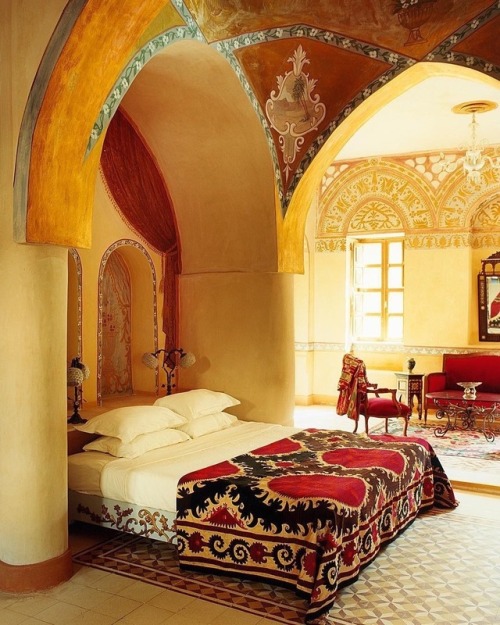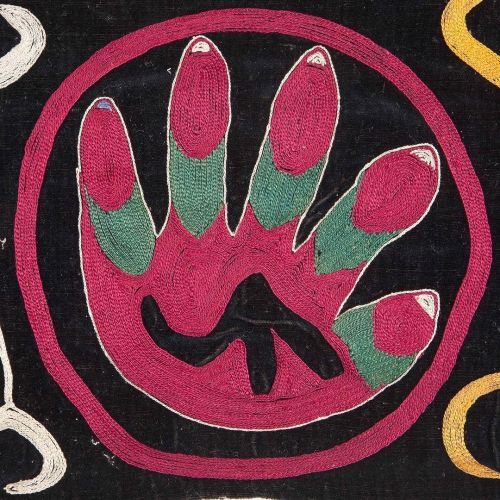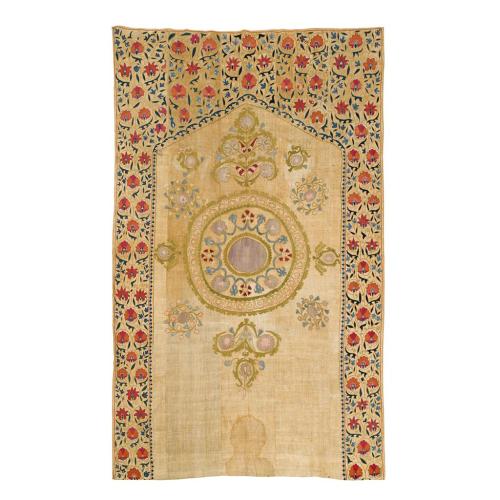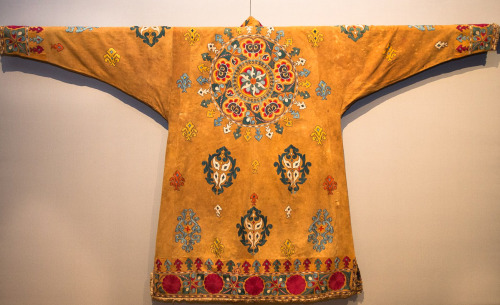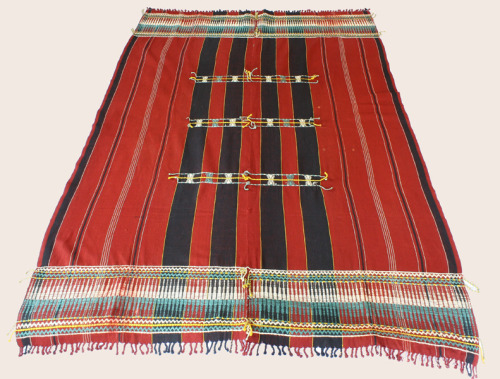#tribal textiles
The Ottoman Room from Luxor’s Al Moudira Hotel. The name means ‘the lady boss’ in Arabic as the hotel is the vision of Lebanese photographer Zeina Aboukheir.The Ottoman Room features a hand painted dome and trompe-l’oeil curtain by Lebanese artist Mario Dahabi, which is on the bed with a traditional Suzani blanket from Uzbekistan.
Post link
Kyrgyz embroidery fragment, Nomads tribal textiles. Silk embroidery on silk velvet, early 20th c. Central Asia.
Post link
Vintage Black and White Photos Brought to Life With Embroidered Details.
———
Artist Satoru Aoyama combines vintage prints and embroidery stitches to create fascinating multi-medium works of art. Known for his ability to intersect the contemporary with the traditional, Aoyama is recognized for his inherent craftsmanship and consistent acknowledgement of the artistic process. By perfectly aligning layers of embroidery onto monochromatic backgrounds, Aoyama is able to add new dimensions to each of his images. His work is one of restoration, taking the faded historical photographs and lending them new life through unique and colorful decorations.
Aoyama makes use of an old Singer sewing machine to adorn his pieces. The intricate process serves as a nod to the individual labor depicted in the photographed scenes. Born in Tokyo, Japan, but having studied art in America and the UK, the talented artist brings this varied educational background to his integrative work approach. Thread is meticulously layered on top of culturally and historically varied backgrounds, providing a depth and energy to the pictures, and allowing the characters’ handiwork to come alive in the process. Paying homage to the unknown embroiderers, Aoyama takes differing elements and merges them together to create a series of unified wholes.
Post link
Antique Uzbek Ikat textiles, 19th c. The David Collection, The Exhibition: Ikat – Flaming Textiles from Uzbekistan (2012-2013)
Post link
FEMALE TYPES OF SAMARKAND, the beginning of XX century. From the collection of Boris Golender. Source photo: Marakanda FB.
Post link
An embroidered Kazakh coat from 19th-century Uzbekistan is one of the items on display at the exhibition at the Textile Museum.
Post link
Hand woven / embroidered blanket from the Naga tribe on the Burmese side of Nagaland available from http://www.sabaidesignsgallery.com/
Post link

